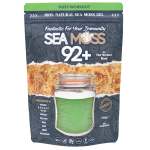
trees now planted
GREEN PEA PROTEIN

Green pea protein is an ingredient in our Post-workout and pre-workout blends, below you will find fascinating information and key benefits about this ingredient.
Pea protein is a natural, vegan protein that contains all nine essential amino acids. It boosts heart health and helps to build muscle mass. Pea protein is a great source of iron, which lifts energy levels and sharpens focus. It can also help weight loss by creating a feeling of fullness.
Peas are the seed of Pisum sativum, which is botanically a fruit. It grows in many parts of the world but is a cool season crop, meaning it’s planted anytime between winter and early summer. They grow especially well in high altitude, tropical climates. When the protein is extracted from green peas, it can be used as a natural, vegan addition to smoothies and shakes.
As well as being a very high quality, organic protein, pea protein is very rich in iron. It contains all nine of the amino acids that the body needs to acquire through food. It is particularly abundant in arginine, which is known to boost heart health as well as valine, leucine and isoleucine, which are linked to the growth of muscle when combined with consistent exercise.
The iron content in pea protein is excellent for raising energy levels and improving focus. Iron also keeps blood cells oxygenated and enables the immune system to function properly. Many people don’t know that they’re iron deficient, so including pea protein in your lifestyle can give you a little lift that you didn’t even know you needed!
Studies have shown that protein helps promote a feeling of fullness, which can aid weight loss efforts. Further research shows that pea protein can also lower cholesterol and blood pressure, lowering the risk of heart disease.
Pea protein is considered safe to use for most people. However, it is relatively high in sodium, so it’s best to proceed with caution if you’re on a sodium-restricted diet.
Key benefits of green pea protein include:
- Allergen-Friendly Alternative: Green pea protein is naturally free from common allergens such as dairy, gluten, and soy. It offers an excellent plant-based protein option for individuals with dietary restrictions or allergies. Green pea protein is also suitable for those following a vegan or vegetarian lifestyle.
- Blood Sugar Regulation: Green pea protein has a low glycaemic index, which means it has a minimal impact on blood sugar levels. Consuming green pea protein as part of a meal or snack can help regulate blood sugar levels, making it beneficial for individuals with diabetes or those seeking to manage blood sugar fluctuations.
- Gut Health: Green pea protein contains dietary fibre, which can promote a healthy gut microbiome. Fibre acts as a prebiotic, providing nourishment for beneficial gut bacteria. A healthy gut microbiome is associated with various health benefits, including improved digestion, enhanced nutrient absorption, and strengthened immune function.
- Heart Health: Plant-based protein sources, such as green pea protein, are associated with several cardiovascular benefits. Incorporating plant-based proteins into the diet can help lower LDL cholesterol (the "bad" cholesterol) levels, reduce blood pressure, and improve overall cardiovascular health markers.
- Muscle Building and Recovery: Green pea protein is a rich source of essential amino acids, including branched-chain amino acids (BCAAs) like leucine, isoleucine, and valine. These amino acids play a crucial role in muscle protein synthesis, making green pea protein a suitable option for supporting muscle growth, recovery, and maintenance.
- Weight Management: Protein is known for its ability to promote satiety and reduce appetite. Green pea protein, with its high protein content and fibre content, can help increase feelings of fullness, leading to reduced calorie intake. Including green pea protein in a balanced diet can aid in weight management and support weight loss goals.
If you are taking anticoagulant medications or diabetes medications, it's crucial to use caution or consult with a healthcare provider before incorporating green pea protein into your diet. Here's why:
- Anticoagulants: Green pea protein contains vitamin K, which plays a role in blood clotting. Anticoagulant medications, such as warfarin (Coumadin), work by thinning the blood to prevent blood clots. Consuming large amounts of vitamin K-rich foods, including green pea protein, can potentially interfere with the effectiveness of anticoagulants. While moderation in dietary vitamin K intake is generally recommended, it's essential to maintain consistent vitamin K levels and consult with a healthcare provider to ensure proper medication management.
- Diabetes Medications: Green pea protein, like other protein sources, can affect blood sugar levels. While proteins typically have a minimal impact on blood glucose compared to carbohydrates, it's still essential for individuals taking diabetes medications to monitor their blood sugar levels closely when incorporating green pea protein into their diet. Depending on individual responses, adjustments to diabetes medication doses may be necessary to prevent hypoglycaemia (low blood sugar) or hyperglycaemia (high blood sugar).
Individuals with the following allergens or medical conditions should use caution or avoid green pea protein:
- Allergies to Legumes: Green peas belong to the legume family, which also includes foods like peanuts, lentils, and soybeans. Individuals with known allergies to legumes may also be allergic to green pea protein. Symptoms can include skin rash, itching, swelling, or respiratory issues such as difficulty breathing. Use green pea protein cautiously if you have known legume allergies.
- Gastrointestinal Disorders: Green pea protein may exacerbate symptoms of gastrointestinal disorders such as irritable bowel syndrome (IBS), bloating, gas, or abdominal discomfort in some individuals. The fiber content in green pea protein may be difficult to digest for some people with sensitive stomachs or gastrointestinal issues. Monitor your symptoms and consider avoiding green pea protein if it worsens gastrointestinal discomfort.
- FODMAP Sensitivity: Green peas contain fermentable carbohydrates known as FODMAPs (fermentable oligosaccharides, disaccharides, monosaccharides, and polyols). Individuals with irritable bowel syndrome (IBS) or FODMAP sensitivity may experience gastrointestinal symptoms such as bloating, gas, or abdominal pain when consuming foods high in FODMAPs, including green pea protein. Consider reducing or avoiding green pea protein if you have FODMAP sensitivity.
- Phenylketonuria (PKU): Some green pea protein products may contain added ingredients or sweeteners, such as aspartame, which contains phenylalanine. Individuals with phenylketonuria (PKU), a rare genetic disorder that affects the body's ability to metabolise phenylalanine, should avoid consuming green pea protein products containing aspartame or other sources of phenylalanine.
DIVE DEEPER
Green pea protein, 100g
Vitamins present |
Value |
Minerals present |
Value |
|---|---|---|---|
|
Vitamin A |
105µg |
Calcium |
24mg - 2.4% |
|
Vitamin B1/Thiamine |
8mg - 15% |
Manganese |
0.3mg - 13% |
|
Vitamin B9/Folate/Folic acid |
48mg - 12% |
Phosphorus |
77mg - 11% |
|
Vitamin C |
12mg - 13% |
Zinc |
0.5mg - 5% |
|
Vitamin K |
29mcg - 24% |



